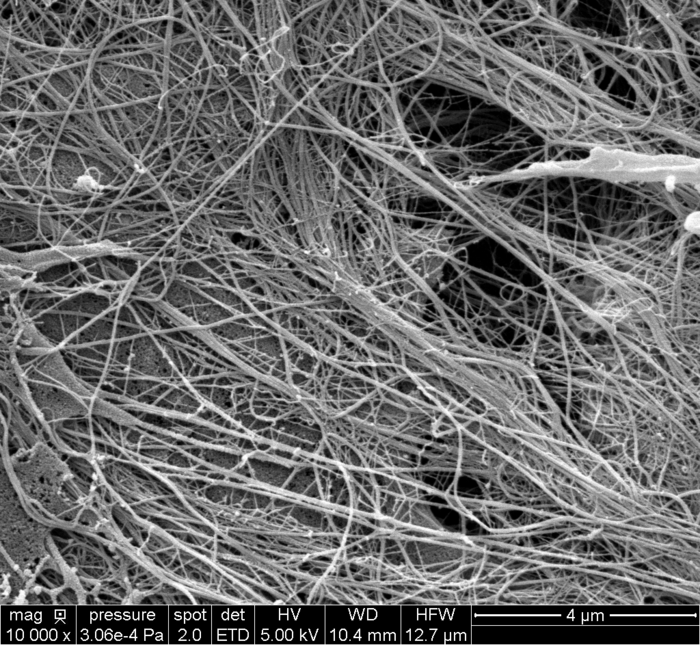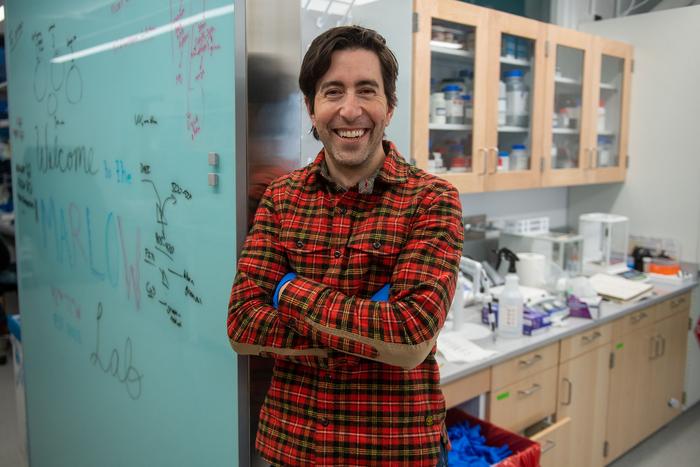Collagen, the main component of the skin’s extracellular matrix, can cause a pathological condition if it is in excess. Applying an electric field to the skin affects collagen pathways, temporarily reducing collagen production and increasing its degradation. This is what researchers from the CNRS, Université Toulouse III – Paul Sabatier and Toulouse INP have just demonstrated, along with an Israeli researcher1. Published on 21 October 2021 in the Journal of Investigative Dermatology, these results open new therapeutic perspectives for the topical treatment of skin fibrosis characterized by excessive collagen deposition.

Credit: © Sara Gouardères – IMRCP
|
Collagen, the main component of the skin’s extracellular matrix, can cause a pathological condition if it is in excess. Applying an electric field to the skin affects collagen pathways, temporarily reducing collagen production and increasing its degradation. This is what researchers from the CNRS, Université Toulouse III – Paul Sabatier and Toulouse INP have just demonstrated, along with an Israeli researcher1. Published on 21 October 2021 in the Journal of Investigative Dermatology, these results open new therapeutic perspectives for the topical treatment of skin fibrosis characterized by excessive collagen deposition.
When an electric field is applied around a tumour, it “permeabilizes” the cells locally and temporarily. This permeabilization ensures, for example, the massive entry of anticancer molecules into cells and tissues, which reduces the amount of doses injected into patients and limits side effects: this is the hospital-based approach of electrochemotherapy that has been used to treat skin tumours since the 1980s.
Interestingly, physicians using this method, and for that matter the patients themselves, have observed an aesthetic and functional healing of the sites treated in this way. However, the mechanisms behind this observation had never been elucidated.
A research team, involving researchers from the CNRS, the Université Toulouse III – Paul Sabatier and Toulouse INP, used a highly sophisticated synthetic skin model, especially used to treat large burns. This artificial skin model has the advantage of being rich in extracellular matrix, comparable to human skin in terms of composition and organization. This matrix is mainly composed of collagen, well known in cosmetics for its role in the skin’s mechanical properties. Collagen, like the whole extracellular matrix, is finely regulated, in particular by its degradation by specialized enzymes which prevent it from being in excess. If this balance is disturbed, the matrix reaches a pathological or disease state, as is the case with fibrotic or hypertrophic scars, characterized by excessive collagen deposition.
Using this artificial skin model, scientists have shown that applying an electric field to the skin affects many genes that influence collagen production and maturation. As soon as four hours after applying the electric field, less collagen is produced. This lasts for several days. In addition, enzymes that degrade collagen have increased activity for at least 48 hours.
The application of an electric field to the skin therefore presents a great potential for future therapeutic use in the treatment of skin fibrosis.
Footnotes
1 – Participating scientists were from the laboratory Interactions moléculaires et réactivité chimique et photochimique (CNRS/Université Toulouse III – Paul Sabatier), the Centre interuniversitaire de recherche et d’ingénierie des matériaux (CNRS/Université Toulouse III – Paul Sabatier/Toulouse INP) and the Centre de microscopie électronique appliquée à la biologie (Université Toulouse III – Paul Sabatier). A researcher from Tel Aviv University in Israel also participated in the study.
Journal
Journal of Investigative Dermatology
DOI
https://doi.org/10.1016/j.jid.2021.09.025
Article Title
Pulsed electric fields induce extracellular matrix remodeling through MMPs activation and decreased collagen production
Article Publication Date
21-Oct-2021





